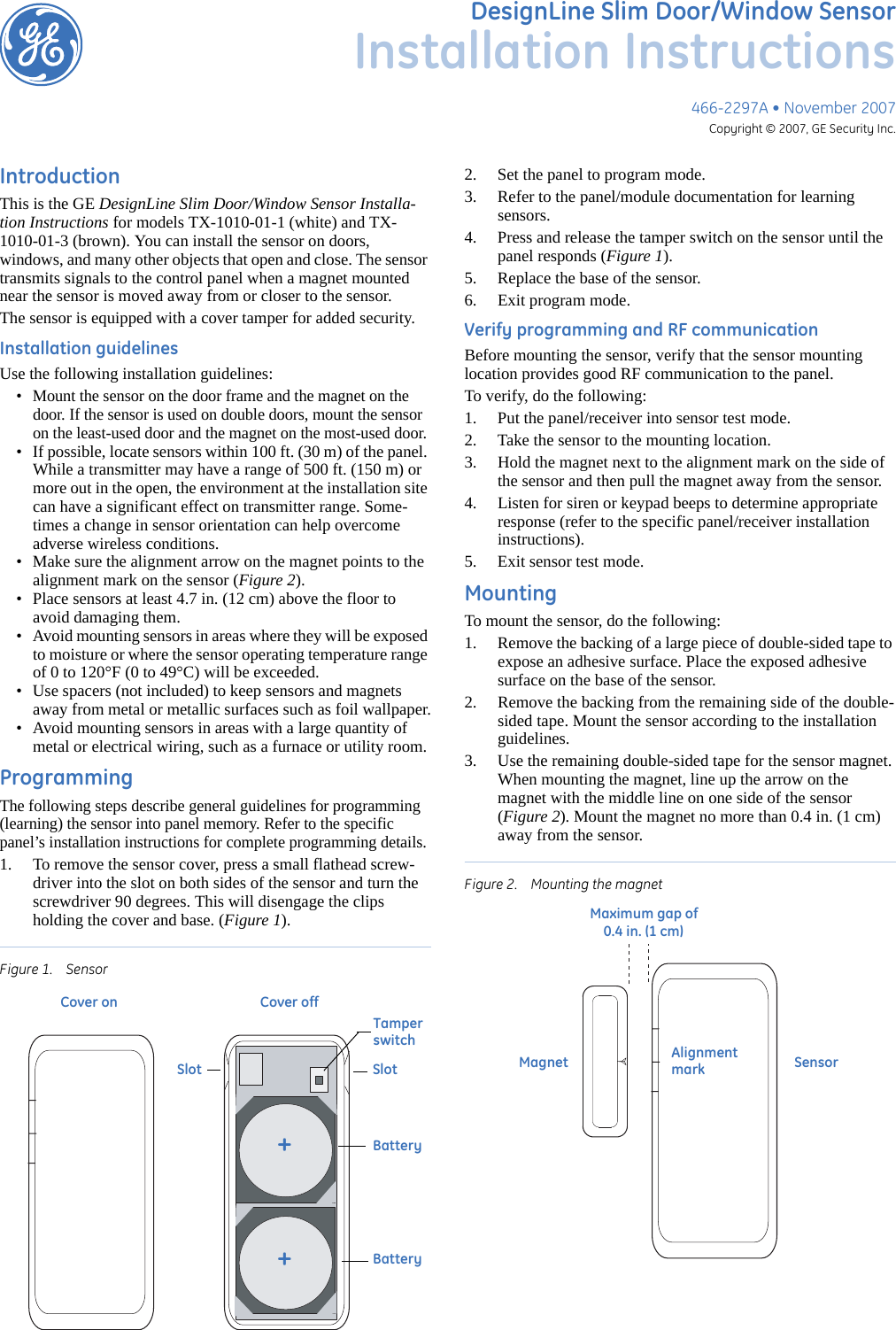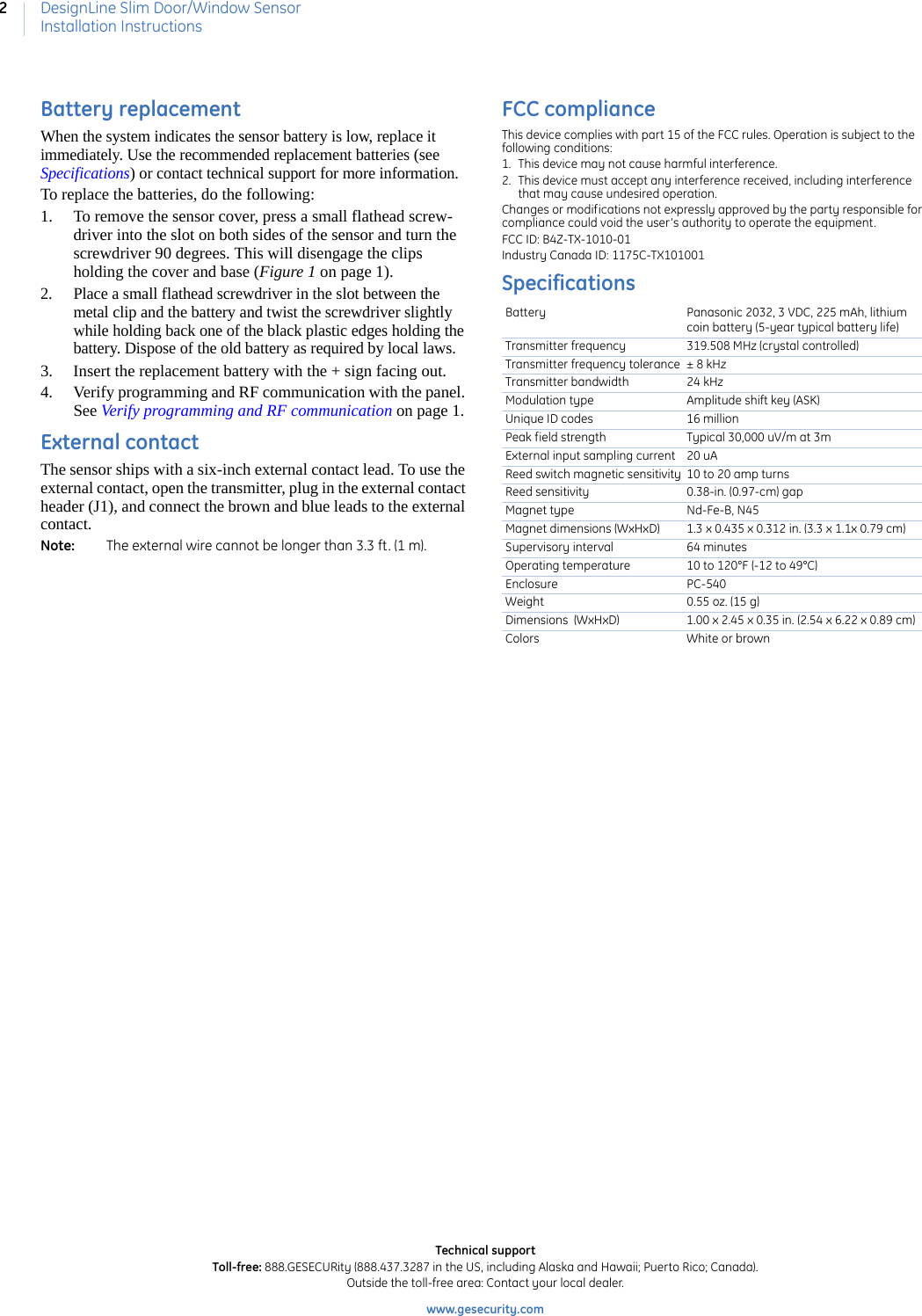UTC Fire and Security Americas TX-1010-01 GE Slim Door Window Sensor 5008-01 User Manual 466 2297A designline slim dw inin
UTC Fire & Security Americas Corporation, Inc. GE Slim Door Window Sensor 5008-01 466 2297A designline slim dw inin
User manual

